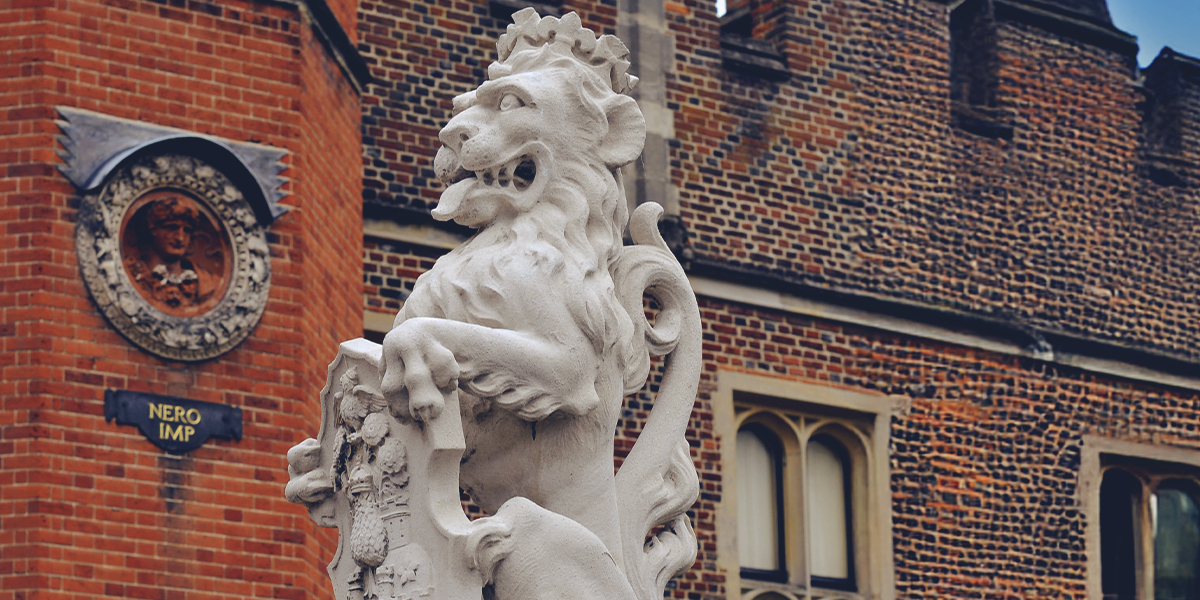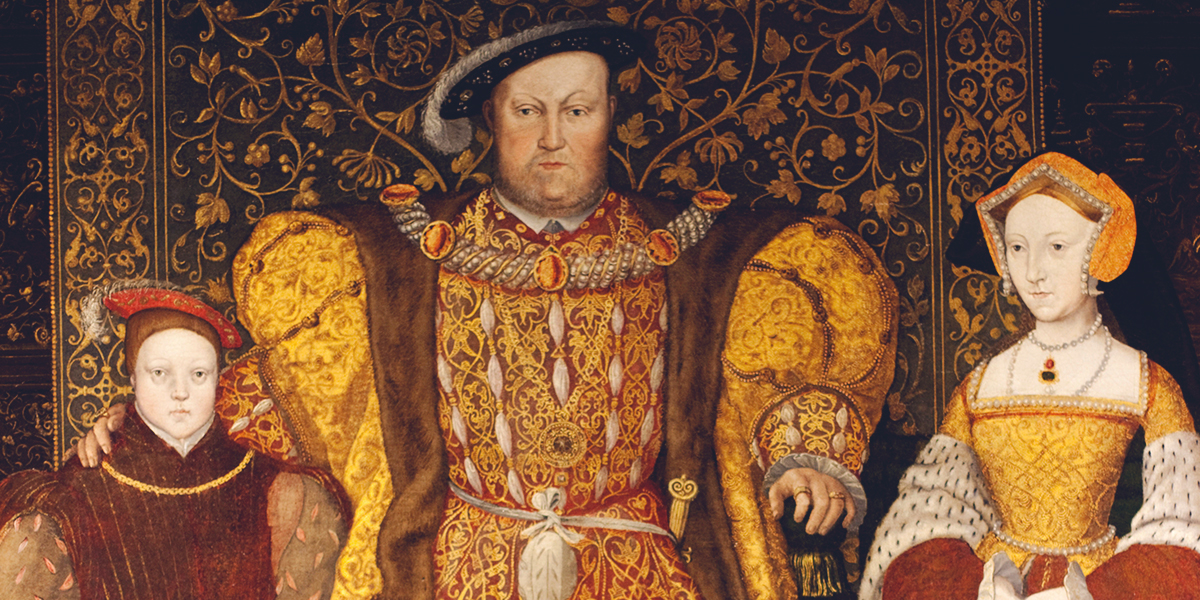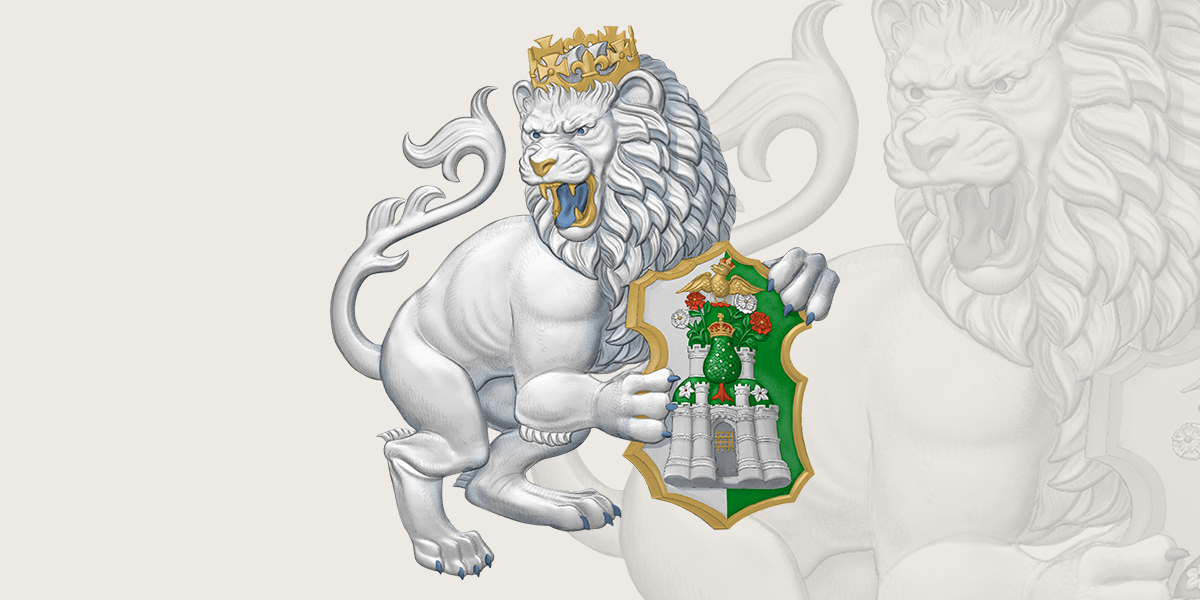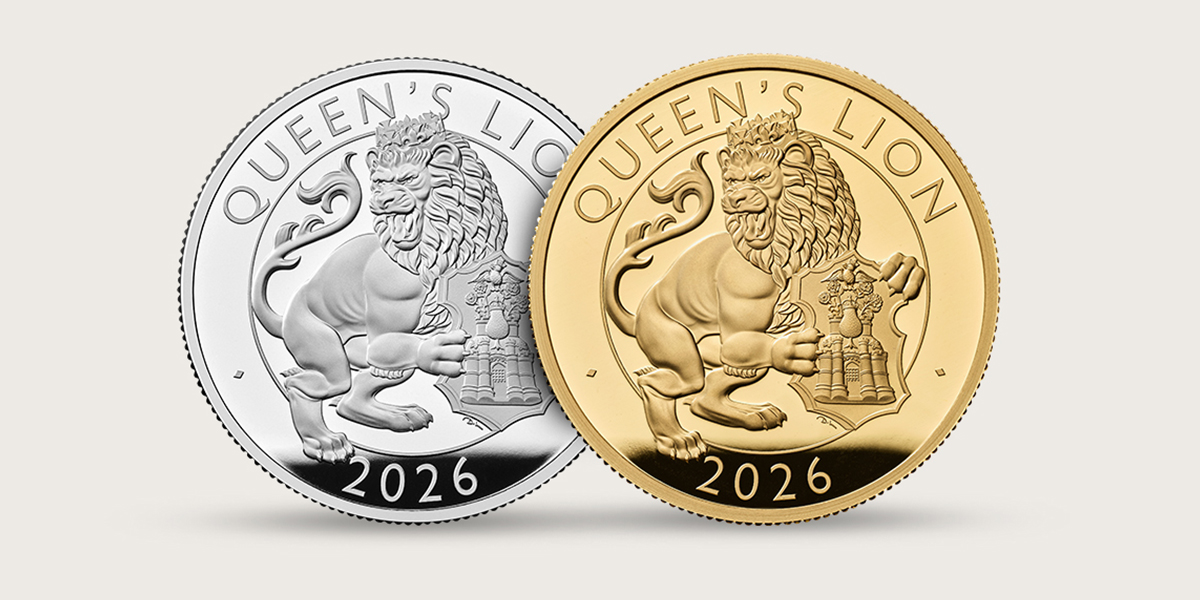The Queen’s Lion
Commemorative • Royal Tudor Beasts
Ten heraldic beasts guard the Moat Bridge at Hampton Court Palace, silently proclaiming the power and legitimacy of the Tudor dynasty. Created during the reign of Henry VIII, these striking statues symbolise the union of the king and his third wife, Jane Seymour.

Heraldic Influence
Henry VIII’s second marriage was to Anne Boleyn and proved controversial. Following Boleyn’s execution in 1536, a swift campaign took place to remove her iconography from the palace. Distancing himself from his second wife, Henry VIII ordered for her badges and personal emblems to be destroyed or replaced.
In some cases, these symbols were simply adapted rather than erased. Anne Boleyn’s falcon was reborn as Jane Seymour’s phoenix, for example, whilst the Boleyn leopard was reconfigured into a Seymour panther. Such was the drive to promote her less contentious virtues, Jane Seymour’s identity was celebrated in artistic decoration right across Hampton Court Palace. And even after her death, Jane Seymour’s imagery and symbols survived.

A Discreet Rise
Jane Seymour grew up in a politically connected family and served as a lady-in-waiting to Anne Boleyn and probably her predecessor Catherine of Aragon. She became Henry VIII’s third wife following the downfall and execution of Anne Boleyn in 1536. Seymour’s motto – ‘bound to obey and serve’ – may have been chosen deliberately to promote the poised submission that earned her the king’s favour. By publicly displaying devotion and humility, she gained a reputation as a nurturing, uncontroversial presence and helped to restore stability within the Tudor court.

A Phoenix Rising From a Flaming Tower
In British heraldry, the English lion has long symbolised courage, nobility and monarchy. Standing erect and crowned, the Queen’s Lion supports a shield bearing Jane Seymour’s badge, which features richly symbolic imagery.
Similar in shape to contemporary designs from around 1490–1540, the shield features a blossoming hawthorn tree that is royally crowned and set against a fortified gateway. Shown rising from a pyre at the top of a green mount, a crowned golden phoenix represents rebirth and self-sacrificing love.
Along with other roundels depicting heraldic Tudor symbols, including the Tudor Rose, portcullis and fleur-de-lis, Jane Seymour’s badge still resides on the ceiling of the Great Watching Chamber inside Hampton Court Palace.
Jane Seymour’s phoenix would prove to be a tragically fitting symbol. In 1537, she gave birth to Henry VIII’s longed-for male heir, the future Edward VI, but died from postnatal complications soon after.

A Powerful Protector
The Queen’s Lion 2026 UK Coin is the latest release in The Royal Mint’s Royal Tudor Beasts Collection. Illustrator David Lawrence depicts the Queen’s Lion upright and crowned, standing protectively over Jane Seymour’s badge. Whilst the design symbolises formidable strength, it also incorporates subtle details that evoke themes of rebirth, stability, and devotion, qualities that reflect both the enduring legacy of Jane Seymour and the steadfast symbolism of the royal beast that guards her memory.
